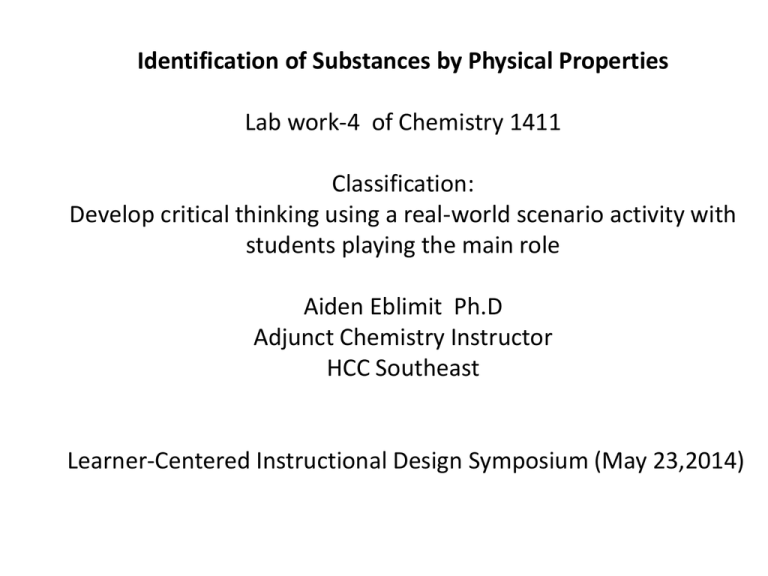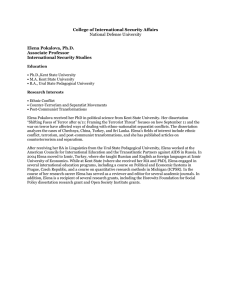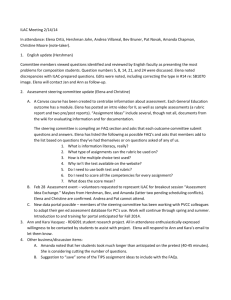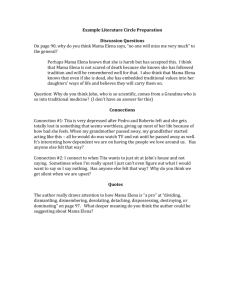Identification of Substances by Physical Properties
advertisement

Identification of Substances by Physical Properties Lab work-4 of Chemistry 1411 Classification: Develop critical thinking using a real-world scenario activity with students playing the main role Aiden Eblimit Ph.D Adjunct Chemistry Instructor HCC Southeast Learner-Centered Instructional Design Symposium (May 23,2014) • Aim: To become acquainted with simple laboratory techniques using physical properties of substances in identification of unknown substances. In order to implement Learnercentered instructional design(LCID), Avatar-led scenario is incorporated Into this lab work with slight modification to enhance learning outcome. Implementation of LCID in this lab work did not change material component that are required for this lab, and also did not increase time period for experiment completion. • Scenario: • Jonh’s daughter(Elena) diagnosed for anemia after she wore diapers from several years ago. Initially, Doctor could not find possible causes of Elena’s illness. Anemia is a condition in which the body does not have enough healthy red blood cells. Red blood cells provide oxygen to body tissues. Jonh and his wife were able to find mothballs in these old diapers, and Naphthalene makes up nearly 100% of active ingradient of mothball. Thus, Naphthalen was the cause of anemia that will be identified by students in Chemistry lab. Instructional steps PartI 1.Play Avatar scenario 1 • Write the symptoms present for the illness on the board or oversized post it notes in black( critical thinking).. – – – – Fever Nausea Dizziness Vomiting • Ask students to collaborate for 3-5 minutes on ideas about what could be wrong with Elena • Ask students to each write their guess on one of their three post it notes • Ask students to add their sticky notes on the board so that ‘like’ guesses create a bar graph • Part II • Play Avatar1_Scenario2 • Add the additional symptoms to the list you started in part I on the board or oversized post-it notes in blue. – Anemia – Abdominal Pain – Discolored, painful urination – Diarrhea • Ask students to collaborate for 3-5 minutes on ideas about what the new symptoms might mean for a diagnosis for Elena • Part III • Play Avatar1_Scenario3 • Add additional symptoms to the list you started in part I and added to in part II on the board or oversized post-it notes in red. – Day 5 of disease – Not iron deficient – Genetic screening revealed nothing – Extremely anemic – Extremely lethargic • Ask students to collaborate for 3-5 minutes on ideas about what the new symptoms might mean for a diagnosis for Elena • Part IV • Play Avatar1_Scenario4 • Students complete the lab using the new lab section provided collaboratively. [Students do not leave until after everyone is done.] • • • • Part V Play Avatar1_Scenario5 Conclusion of experiment (find the answer through investigation) • Question and suggestion: • How would you apply LCID in your courses to engage students in collaborative and proactive learning? Please design a case that links course work to a real life scenario in which students play main role.





